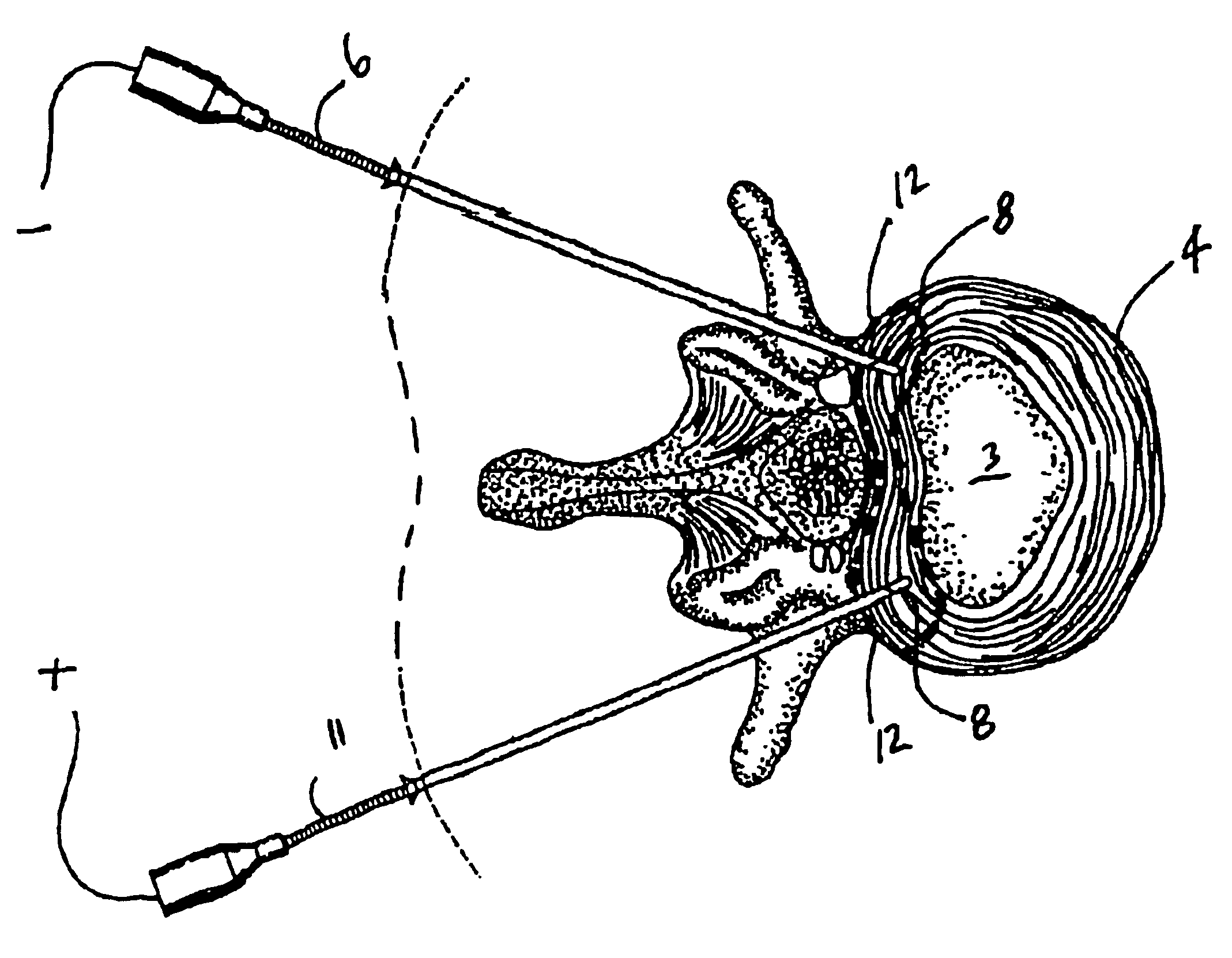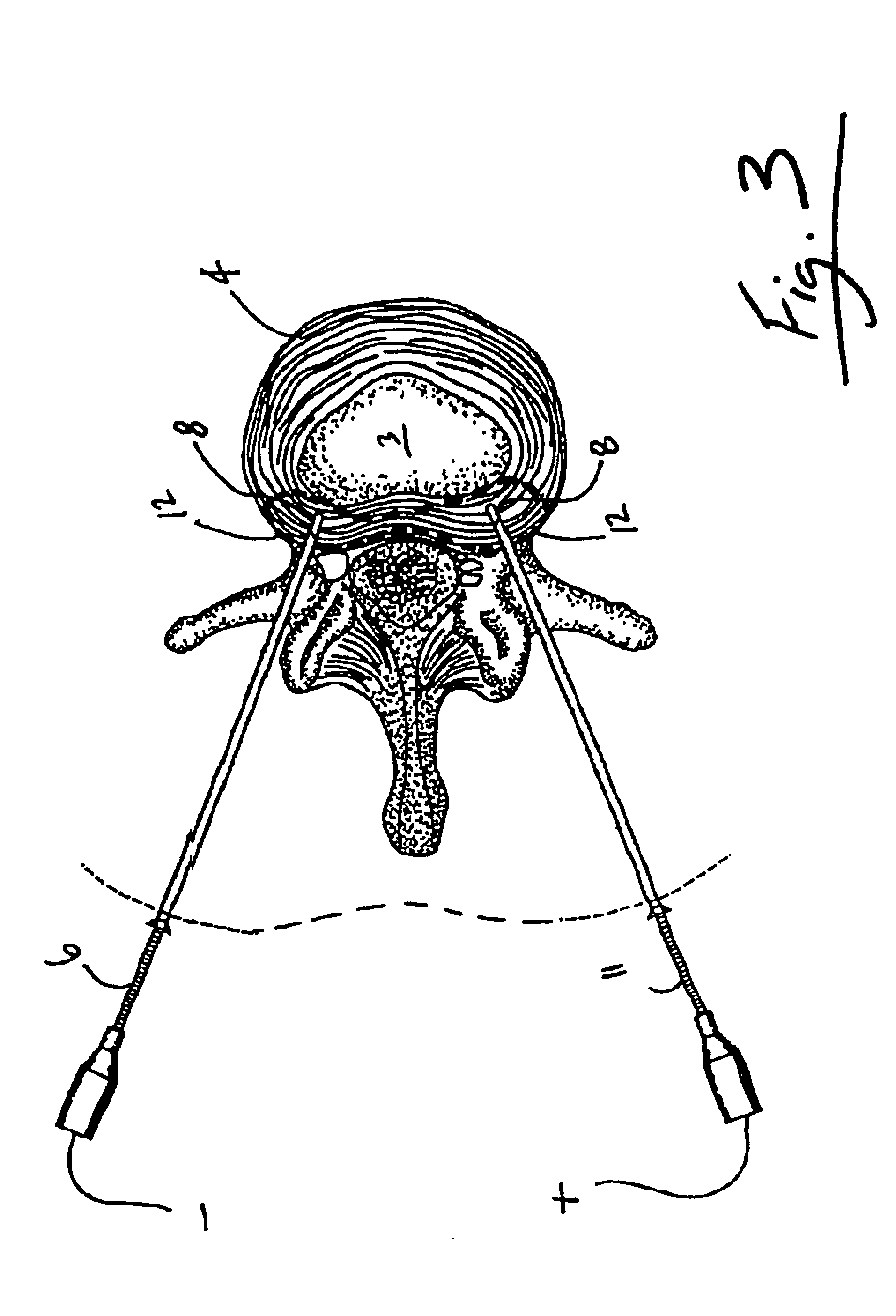Intradiscal lesioning device
a technology of disc lesioning and stent, which is applied in the field of radio frequency electrical energy, can solve the problems of large proportion of health care funds, disc abnormalities and pain, and debilitating conditions of patients
- Summary
- Abstract
- Description
- Claims
- Application Information
AI Technical Summary
Benefits of technology
Problems solved by technology
Method used
Image
Examples
Embodiment Construction
[0047]FIGS. 1 and 2 illustrate a section of a patient's vertebrae 1 and a typical uninjured intervertebral disc 2. The centrally located nucleus pulposus 3 is bounded by the annulus fibrosus 4 and the cartilage endplates (not shown). The cartilage endplates are joined to the vertebrae above and below the intervertebral discs. Metabolites diffuse from blood vessels in the vertebrae 1 through the cartilage endplates to the nucleus pulposus 3 and annulus fibrosus 4. FIG. 2 shows one embodiment of a first probe 6 is inserted through an introducer tube 5, also referred to as a catheter tube. The proximal portion 7 of probe 6 is connected to an electrical power source (not shown). In the embodiment shown in FIG. 2, the distal portion 8 of the probe 6 is inserted partially into the annulus fibrosus 4 to conduct electrical current or apply heat thereto as further described with reference to FIG. 3.
[0048]Although some of the figures and the description relate to the percutaneous insertion of...
PUM
 Login to View More
Login to View More Abstract
Description
Claims
Application Information
 Login to View More
Login to View More - R&D
- Intellectual Property
- Life Sciences
- Materials
- Tech Scout
- Unparalleled Data Quality
- Higher Quality Content
- 60% Fewer Hallucinations
Browse by: Latest US Patents, China's latest patents, Technical Efficacy Thesaurus, Application Domain, Technology Topic, Popular Technical Reports.
© 2025 PatSnap. All rights reserved.Legal|Privacy policy|Modern Slavery Act Transparency Statement|Sitemap|About US| Contact US: help@patsnap.com



